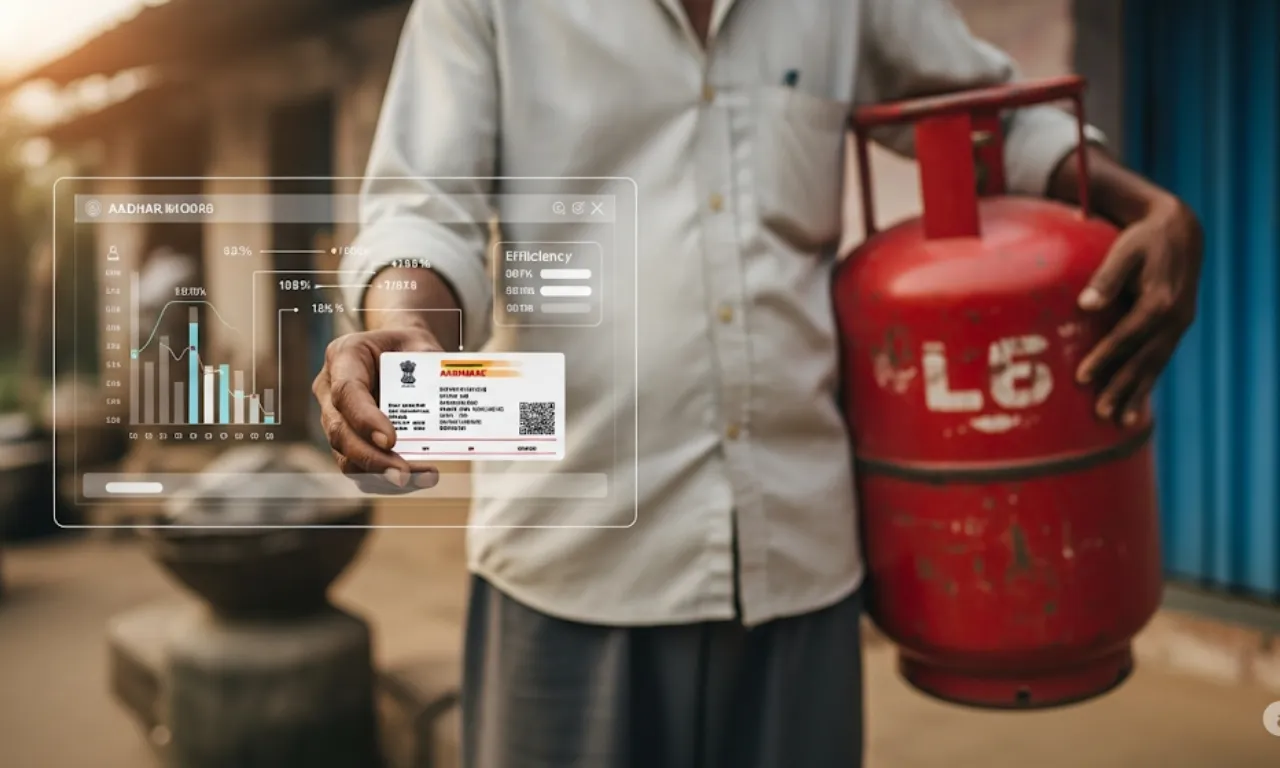- Over 4 crore fake and inactive LPG connections blocked under the Pratyaksh Hanstantrit Labh (PAHAL) Scheme, improving subsidy efficiency.
- Aadhaar compliance for LPG subsidy delivery has reached 92.44%, reducing transaction failures and making sure you get benefits on time.
- Technological steps like biometric authentication, SMS alerts, and Delivery Authentication Code increase clarity and help consumers.
Pratyaksh Hanstantrit Labh (PAHAL) Scheme has made strong improvements in LPG subsidy delivery and transparency across India. With actions like blocking over 4 crore fake and inactive LPG connections and reaching over 92% Aadhaar compliance, the scheme is changing how subsidies reach the right people. If you’re a consumer or want to know more about LPG subsidy changes, it’s important to see how PAHAL is making a difference.
Impact of PAHAL Scheme on Fake LPG Connections
Under the PAHAL scheme, more than 4.08 crore LPG connections identified as duplicate, fake, non-existent, or inactive have been blocked, suspended, or deactivated. This strong step helps stop subsidy leakages and makes sure government funds go only to deserving households. These measures improve overall subsidy efficiency and keep beneficiary data accurate.
Role of Aadhaar Integration in Subsidy Transparency
Aadhaar integration is key to the scheme’s success. With 92.44% Aadhaar seeding among 33.05 crore active LPG consumers and 86.78% Aadhaar Transfer Compliance for Direct Benefit Transfer for LPG (DBTL) users, subsidy transactions have become much smoother. By linking Aadhaar biometrically, failures caused by issues like bank account deseeding, mergers, or inactive accounts have dropped, making sure you usually get your subsidy within two days of LPG delivery.
Biometric Authentication and PMUY Connection Verification
The scheme requires biometric Aadhaar authentication for all new beneficiaries under the Pradhan Mantri Ujjwala Yojana (PMUY), and has completed authentication for 67% of existing PMUY connections. Also, inactive PMUY connections are identified and removed based on a Standard Operating Procedure since January 2025, with 12,000 inactive connections recently terminated and 8.49 lakh ineligible connections removed since the scheme started.
Enforcement and Monitoring Mechanisms
The Liquefied Petroleum Gas (Regulation of Supply and Distribution) Order, 2000, along with strict Marketing Discipline Guidelines from Oil Marketing Companies, governs distribution. Regular and surprise checks by OMC regional and zonal officers, Anti-Adulteration Cell, and Vigilance teams enforce rules. These steps hold distributors accountable and punish malpractice to keep LPG supply chains trustworthy.
Consumer Empowerment Through Technology
Consumers benefit from modern technology through SMS alerts that update you at every booking, invoicing, and delivery stage. The Interactive Voice Response System (IVRS) makes refill booking easy to use. Plus, the Delivery Authentication Code (DAC) makes sure LPG refills reach only the right consumers, preventing diversion and fraud.
Performance Metrics and Beneficiary Satisfaction
| Parameter | Value/Details |
|---|---|
| LPG Refills Delivered (FY 2024-25) | About 194 crore |
| Complaint Rate | Only 0.08%, mostly about delivery delays or subsidies |
| Beneficiary Satisfaction (RDI Survey) | Over 90% satisfied with subsidy reimbursement process |
The positive numbers show the scheme’s efficiency. Still, the government keeps focusing on better infrastructure, more accurate subsidy targeting for poor sections, and raising safety awareness in local languages.
Future Improvements and Government Actions
Looking ahead, the government has introduced the Common LPG Database Platform (CLDP), which uses several unique IDs like Aadhaar, bank accounts, ration cards, and addresses for better deduplication and subsidy targeting. Updates to the grievance redressal system will speed up problem-solving and improve consumer satisfaction.
You can expect that ongoing government focus on technology, monitoring, and inclusive policies will keep the PAHAL scheme a strong example of clear and efficient LPG subsidy distribution in India.
For official information and updates, visit the PAHAL Scheme official website.

